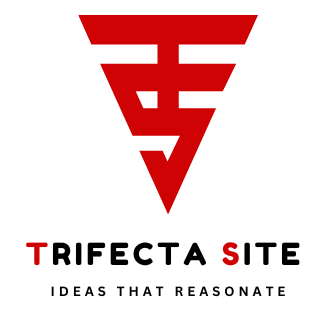The New York Times (NYT) Spelling Bee is a popular daily word puzzle that challenges players to create as many words as possible using a set of seven unique letters. With its addictive gameplay, the Spelling Bee has become a favorite pastime for word enthusiasts worldwide. This article provides a comprehensive guide to “Spelling Bee answers and analysis,” helping you master the game while diving deep into its nuances.
Table of Contents
What is the NYT Spelling Bee Answers and Analysis?
The NYT Spelling Bee is a daily word puzzle that consists of seven letters arranged in a honeycomb shape, with one letter in the center. Players must form words using at least four letters, and every word must include the center letter. Each puzzle includes at least one “pangram,” a word that uses all seven letters. Understanding “Spelling Bee answers and analysis” helps unravel the complexity of these daily puzzles.
Why Analyze Spelling Bee Answers and Analysis?
Understanding “spelling bee answers and analysis” goes beyond finding words; it helps improve vocabulary, sharpen word-solving strategies, and elevate your puzzle performance. By analyzing answers, you can:
- Compare Your Results: See how your score ranks against others by reviewing percentile data.
- Identify Pangrams: Learn to spot high-value words that boost your score.
- Expand Your Vocabulary: Discover new words and their etymologies.
- Develop Strategies: Learn techniques to find words more efficiently.

Key Features of the Spelling Bee Answers and Analysis Puzzle
- Daily Puzzle: A new puzzle is released every day, keeping the challenge fresh.
- Center Letter: The central letter is mandatory for all words.
- Pangrams: Each puzzle includes at least one pangram, which is worth significant points.
- Word Length: Words must be at least four letters long, with longer words earning higher scores.
- Points System: Points vary based on word length and complexity.
With these key features, analyzing Spelling Bee answers and performance becomes easier.
Tips to Excel at Spelling Bee Answers and Analysis
1. Focus on the Center Letter
Since every word must include the center letter, start by brainstorming all possible combinations with it. This approach is a vital part of “Spelling Bee answers and analysis.”
2. Find Pangrams Early
Identifying the pangram can give you a significant advantage, as it boosts your score dramatically. Incorporating pangrams into your strategy is essential when performing in-depth Spelling Bee analysis.
3. Use Word Patterns
Look for common prefixes (e.g., “pre,” “re”) and suffixes (e.g., “ing,” “ed”) to create multiple words. Spelling Bee answers often involve recognizing such patterns.
4. Experiment with Word Lengths
While short words add up, focus on longer words for higher points. Finding 6-letter words, for example, can significantly impact your score and is a key component of Spelling Bee analysis.
5. Use a Bee Solver (Sparingly)
Online solvers can help you analyze past puzzles and improve your skills without spoiling the fun. Tools like a “bee solver” are excellent resources for in-depth analysis in the puzzle business.
Analyzing Common Entities in Spelling Bee Answers
Length and Points
Words’ lengths determine their point value. Short words provide a base score, but longer words like “academic” or “acidic” yield higher rewards.
Pangrams in Spelling Bee Answers and Analysis
Pangrams are crucial in the Spelling Bee. For instance, a puzzle in June might feature “academia” as a pangram. Learning to spot such words early can elevate your gameplay.
Daily Themes in Spelling Bee Answers and Analysis
Words often relate to the time of year or cultural events. For example:
- December Puzzles: Might include festive terms.
- March Puzzles: Could feature words like “cicada” or “decade.”
Etymology and Word Origins
Exploring the origins of words enriches the game. Here are examples:
- Acacia Etymology: Derived from the Greek word “akakia,” meaning thorny tree.
- Caddie and Caddy Etymology: Both relate to assistants, with roots in French and Scottish usage.
By analyzing these entities, “Spelling Bee answers and analysis” becomes more engaging and educational.
Spelling Bee Answers and Analysis Solver Tools
A “bee solver” can provide insights into previous puzzles and help you analyze your performance. These tools highlight missed words and offer solutions to improve your skills.
Comparing Your Results in Spelling Bee Answers
Many players compare their daily scores and percentile rankings to gauge their progress. This feature keeps the game competitive and engaging.
Yesterday’s Spelling Bee Answers
Reviewing “yesterday’s answers” can help identify patterns and expand your vocabulary. For instance, if you missed “acidic,” “acme,” or “cede,” analyzing these words will help you recognize them in future puzzles.
Strategies for Maximizing Points in Spelling Bee Answers
- Build Many Words Explore all combinations of letters to create “many words,” including shorter ones like “acid” or “cede.”
- Use Rare Words Words like “cicada” or “decay” may not come to mind immediately but offer unique points.
- Analyze and Reflect After solving, compare your answers with the puzzle’s solution to learn and grow.
These strategies are crucial to mastering “Spelling Bee answers and analysis.”
Examples of Tricky Words in Spelling Bee Answers
Common Words
- Acid: A substance with a sour taste.
- Academy: An institution of learning.
- Cede: To give up power or territory.
Uncommon Words
- Cicada: An insect known for its distinctive sound.
- Decade: A period of ten years.
- Acme: The peak or highest point.
Why Spelling Bee Answers and Analysis is Addictive
The combination of challenge, education, and competition makes the Spelling Bee a uniquely engaging word game. Players love the satisfaction of finding pangrams and discovering new words. The daily release ensures fresh content, while tools like solvers help players stay competitive.
Conclusion
“Spelling Bee answers and analysis” offers invaluable insights into one of the most engaging word puzzles today. By focusing on strategies, understanding word etymologies, and analyzing your performance, you can enhance your gameplay and vocabulary. Whether you’re solving the daily puzzle, exploring words like “academe” and “acidic,” or reflecting on “yesterday’s answers,” the Spelling Bee provides endless opportunities for learning and fun. So, next time you tackle the NYT Spelling Bee, remember these tips and let your word prowess shine!
FAQs About Spelling Bee Answers and Analysis
- What is a Spelling Bee?
A spelling bee is a competition where participants spell words aloud. It tests vocabulary, memory, and focus. - Where can I find Spelling Bee answers and analysis?
You can find Spelling Bee answers and detailed analysis on various educational websites, puzzle forums, and dedicated Spelling Bee resources. These often provide daily solutions, word breakdowns, and strategies. - Why is analyzing Spelling Bee answers important?
Analyzing answers helps improve vocabulary, understand word patterns, and identify common prefixes, suffixes, and root words, which can enhance performance in future challenges. - How can Spelling Bee Answers and Analysis improve my skills?
By reviewing answers and studying their linguistic roots, syllable structure, and contextual usage, you can better anticipate and understand words in competitions. - Are there online tools for Spelling Bee answers and analysis?
Yes, websites and apps provide tools for generating possible answers, analyzing word lists, and practicing for spelling bees.





